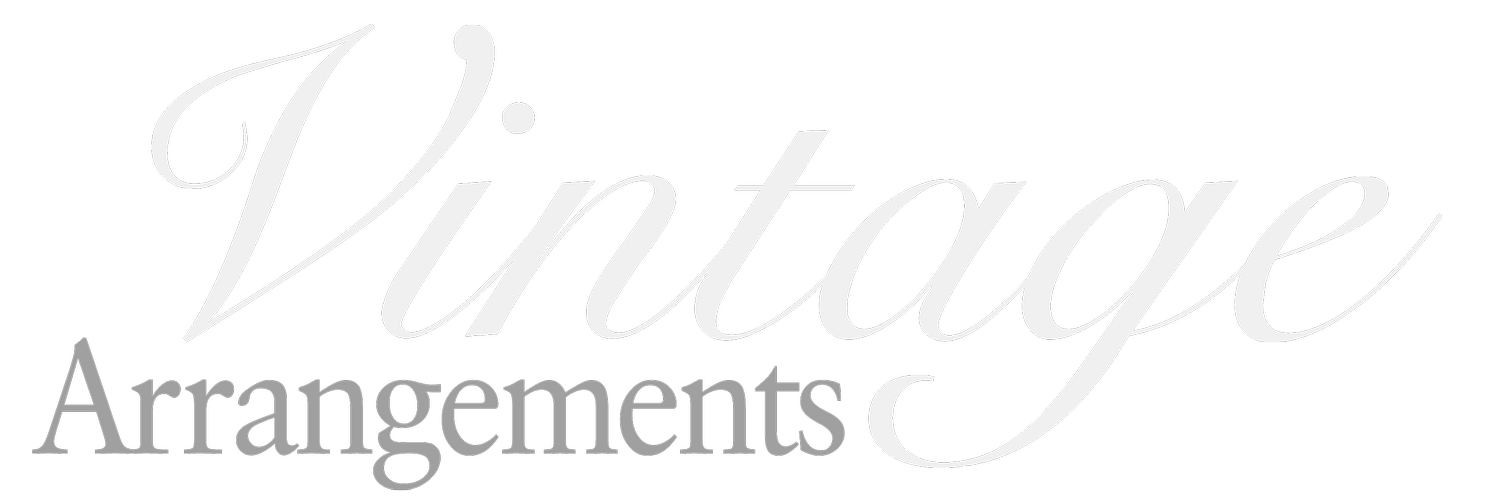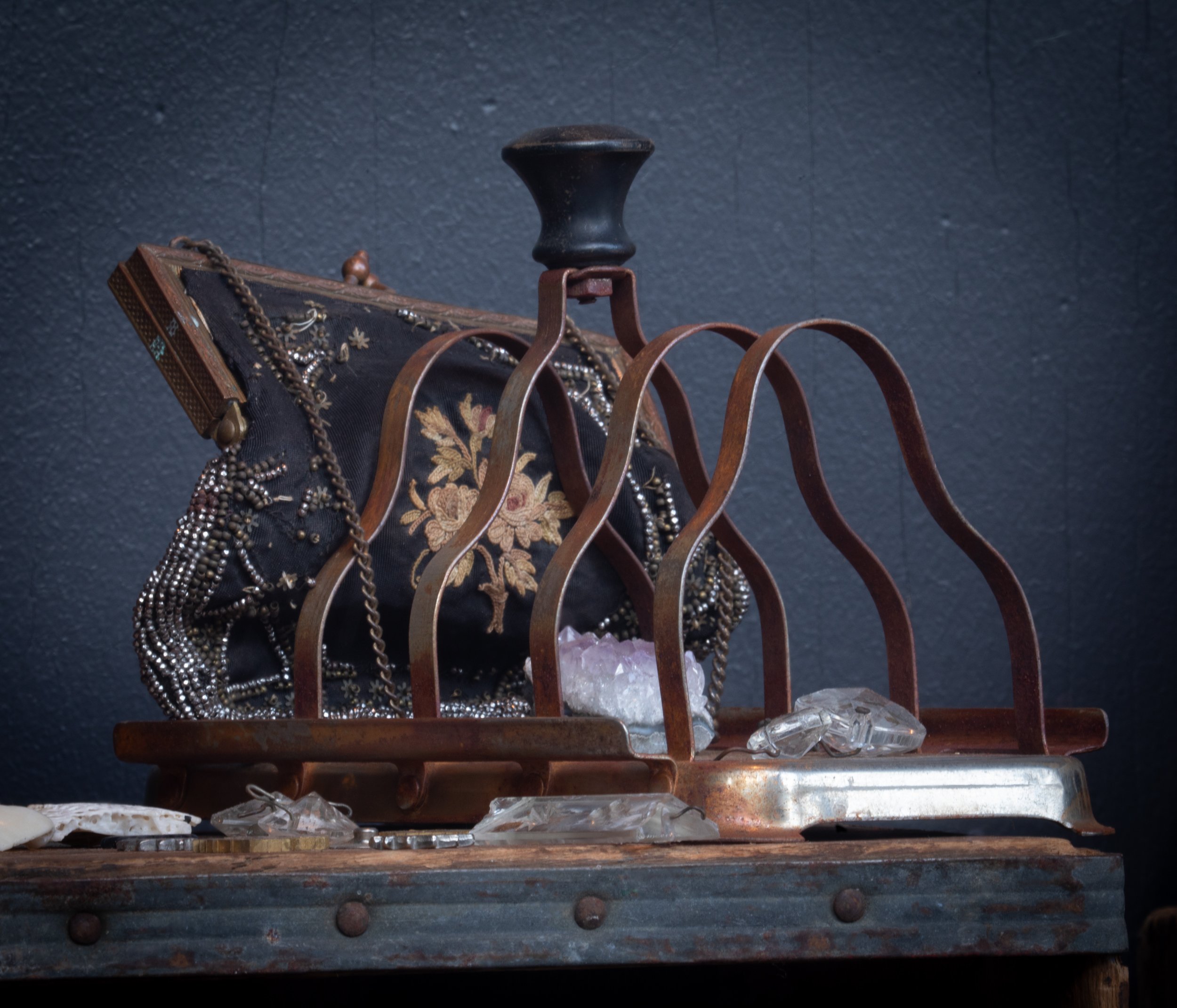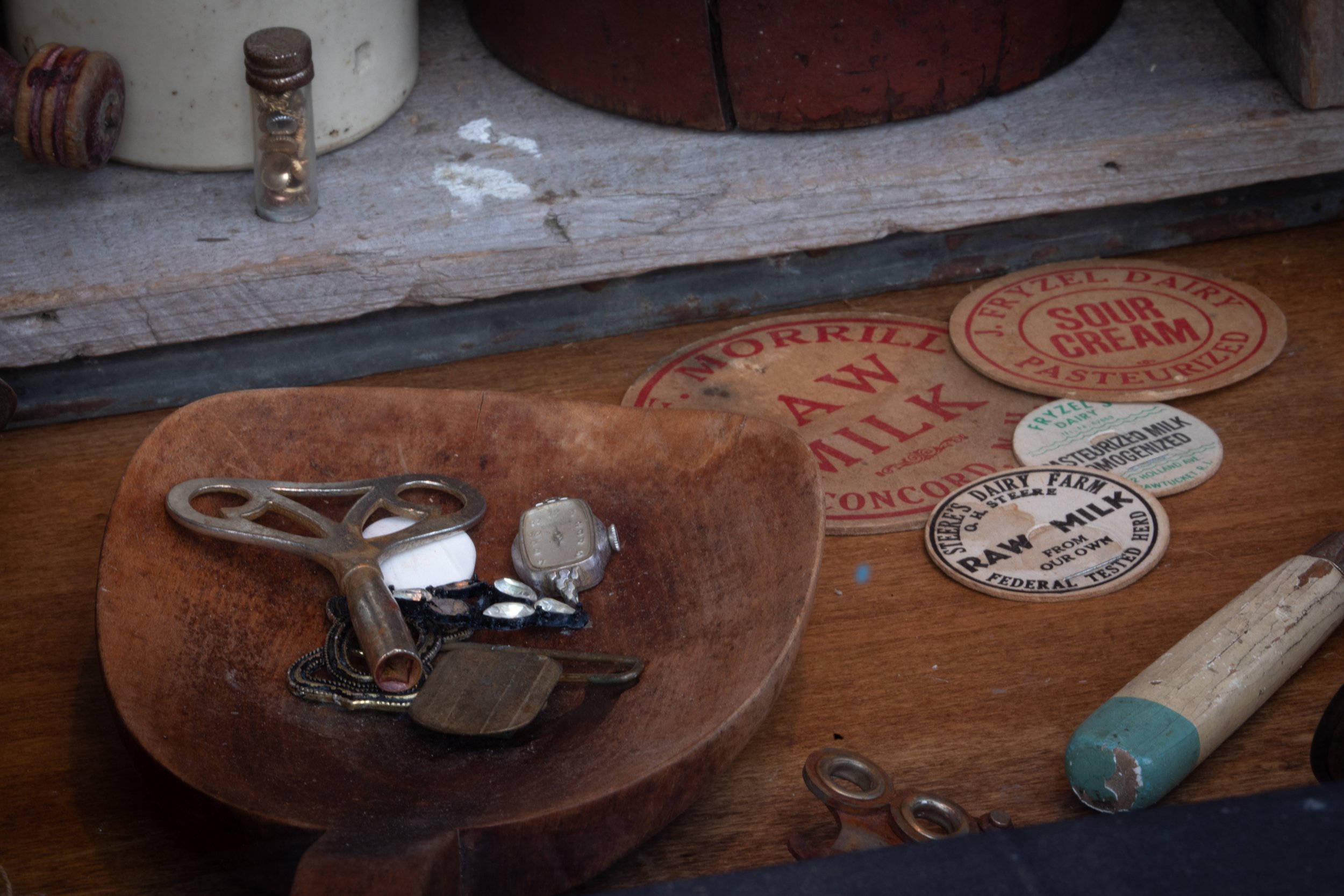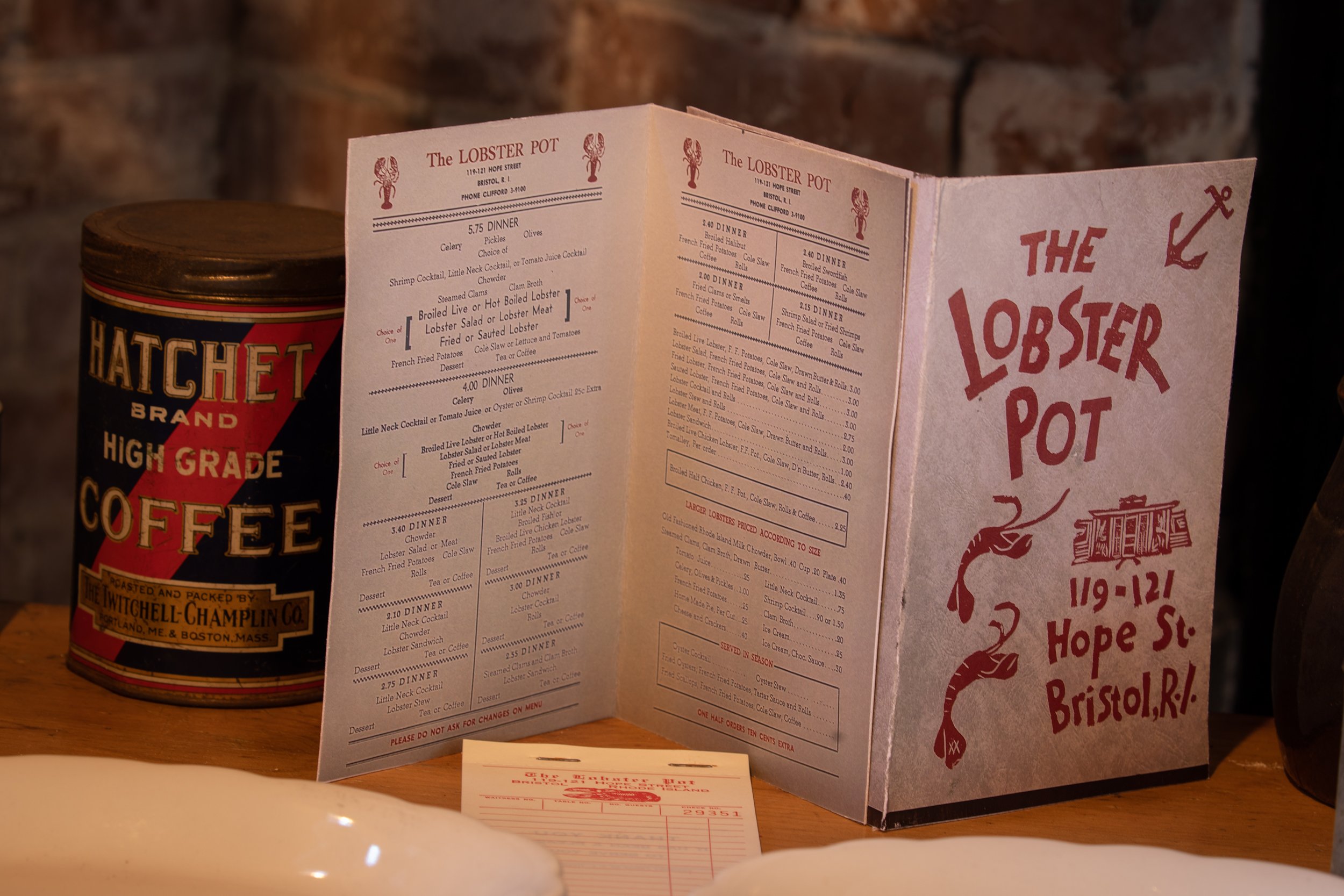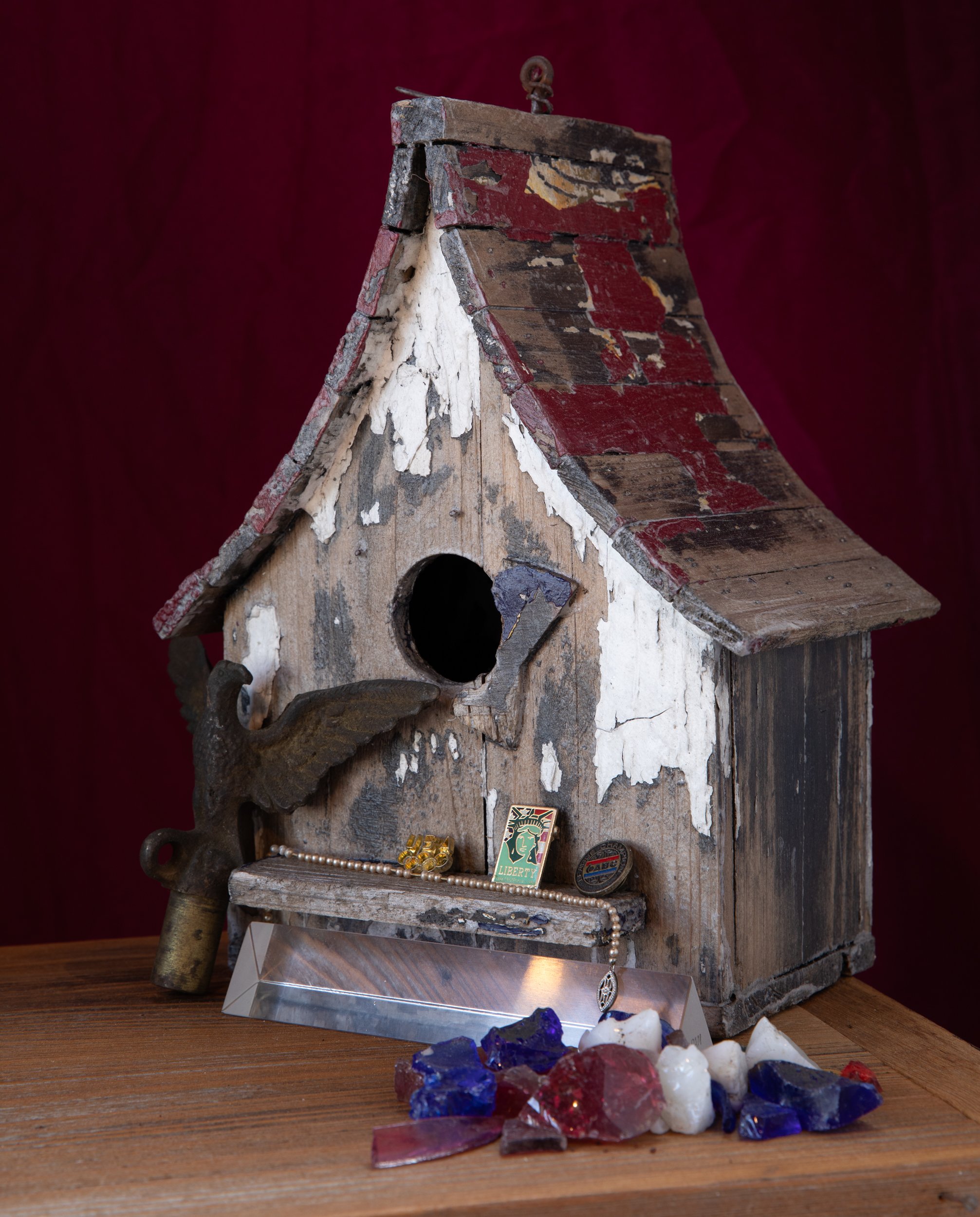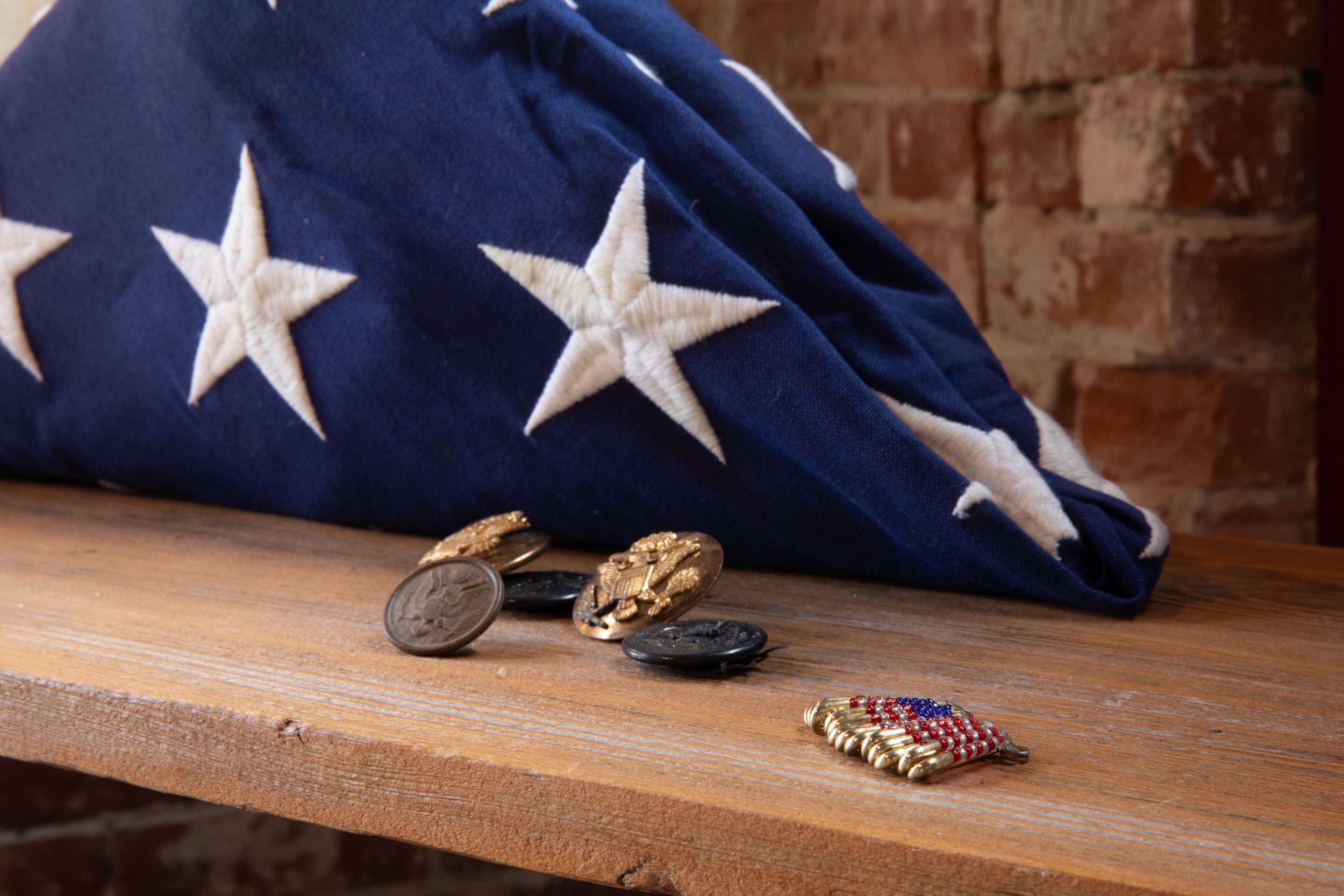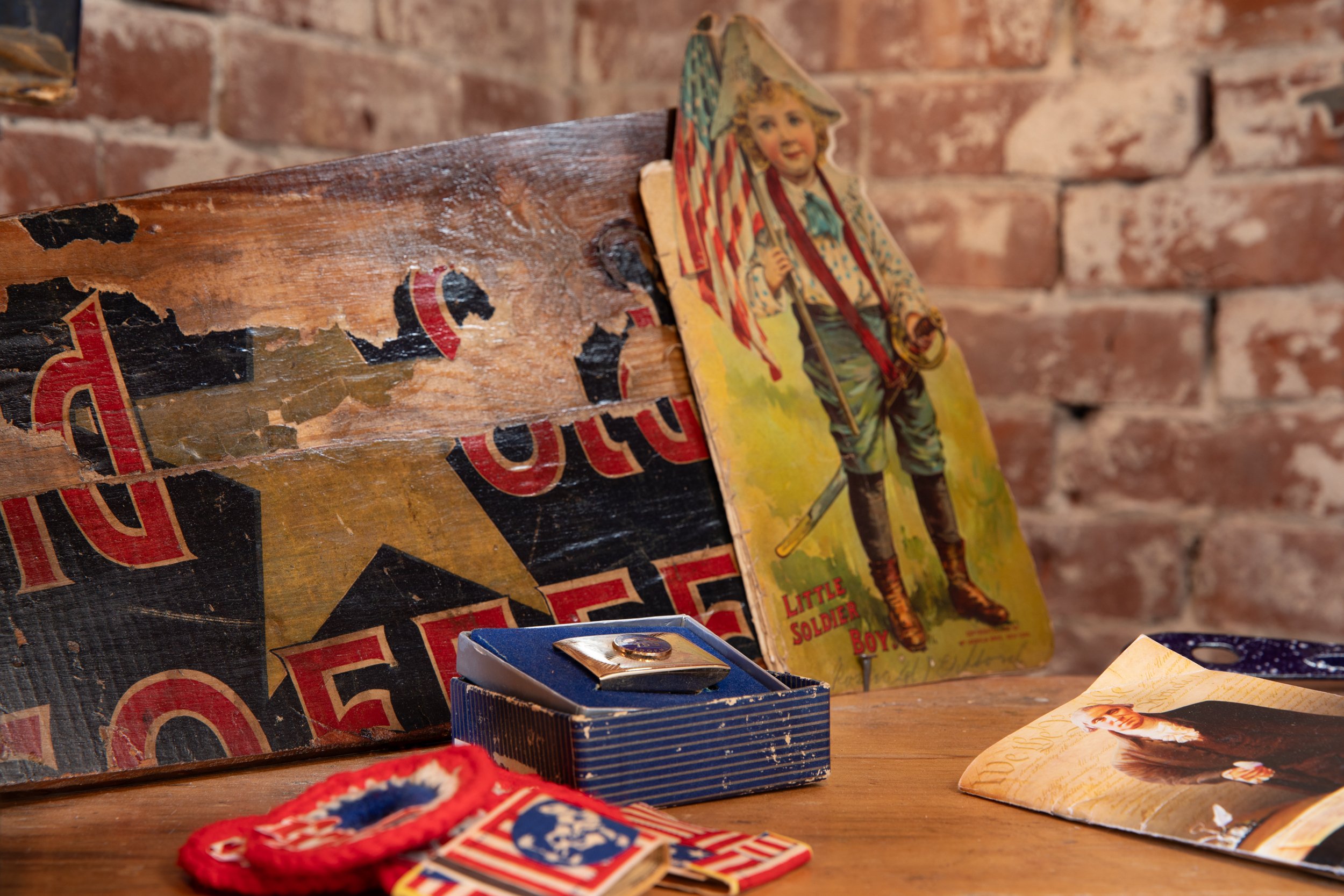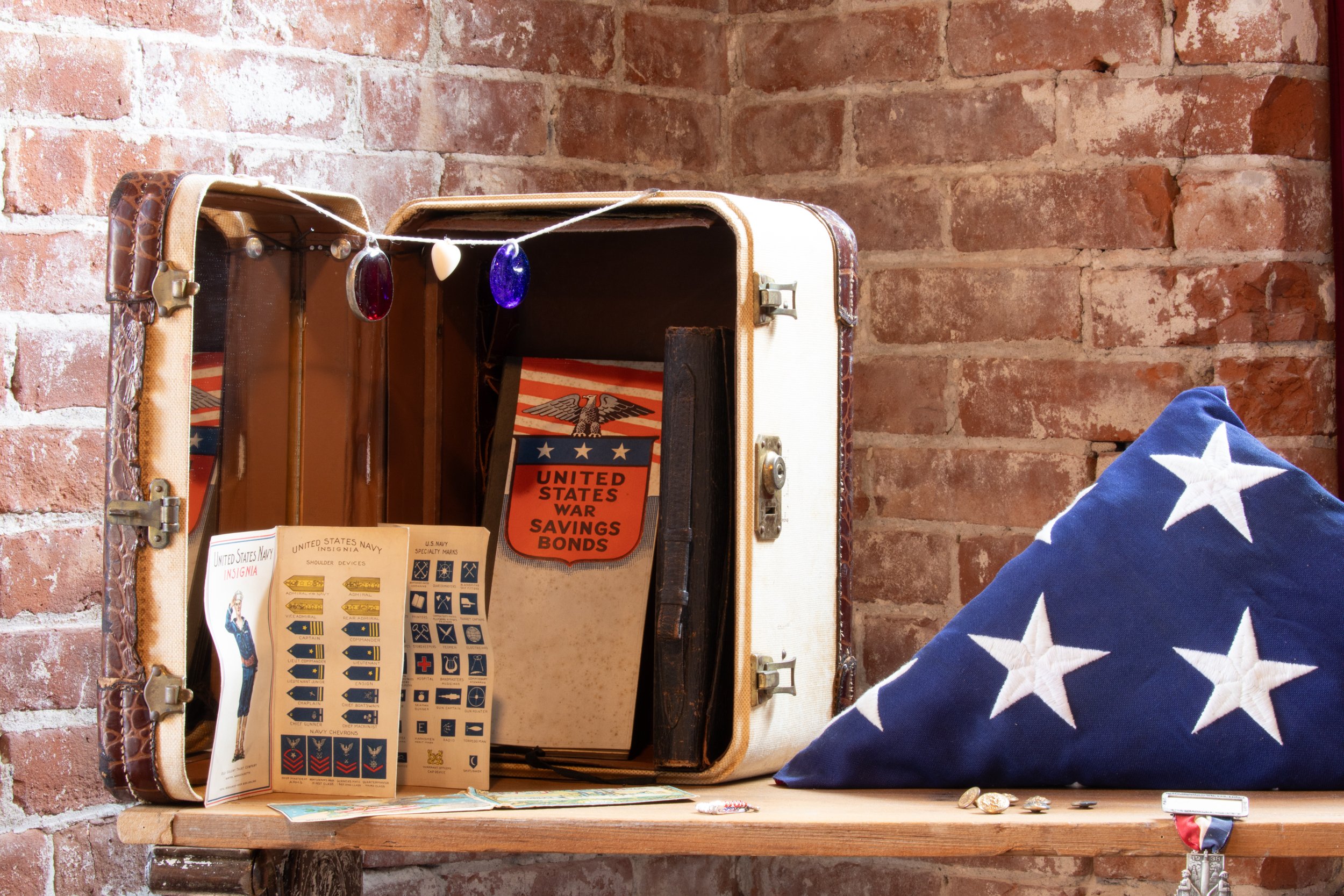Galleries
CHECK OUT SOME
RECENT WORK HERE
Congratulations USA
Warren Artists Gallery at Warren Town Hall
Saved By Fire
Created to be hung on a wall but this arrangement became “Saved from Fire” when it moved to the little table which was slated to be burned in a Vermont pit fire.
If you zoom in on the corners of the vertical box on the left, you can see a very unusual method of joining two pieces of wood. The sides of the box are joined by a single “dovetail” that runs the length of the joint.
After immigrating from Russia to the United States, Isidor Leviton opened a small tinsmithing business in 1906, that is Leviton Manufacturing Co. today.
S.S.Pierce opened a corner grocery store in Boston in 1831. The business flourished for 150 years selling all kinds of groceries and specialty goods. “The Overland” Perfecto was the company’s best known cigar.
Commissioner of Deeds
To the far right on the top shelf you will find a dual-purpose Lion Head seal that was used by J.W. Fowler. It seems that he served in two positions:
“A Commissioner of Deeds” for the State of New York and Bennington County, Manchester, Vermont.
Adding machines like the one on the far right, and paper cutters similar to the one on the far left, were both commonly used in early offices.
The initials in the logo, USMCo, stands for the United Shoe Machinery Co. This was a very large company formed by three shoe machinery firms in 1899 and was based in Boston. At its height, it employed 9000 and merged in 1989 with Black and Decker.
Better Homes & Gardens Magazine launched as Fruit, Garden and Home in 1922 and became Better Homes & Garden in 1924. Today it is the 4th best selling magazine in the US.
To the far right of the top shelf is a dual purpose seal that was used by J.W. Fowler. It seems that he served in two positions:“A Commisioner of Deeds” for the State of New York and Bennington County, Manchester, Vermont.
National Grange of the Order of Husbandry, founded in 1867 is an organization in the US to promote the social and economic needs of farmers. Locally, these groups are known as the Grange. The ribbon just left of center was worn by an official of the Grange.
Stay on the Level
Throughout the first half of the 20th century, many businesses offered free gifts to advertise their products. Chevrolet gave away attractive and functioning levels to help sell their shock absorbers called SUPERLIFT.
Rotary style eggbeaters were invented in Great Britain and the US just prior to 1860.
Miscellaneous vintage:
Mid 19th Century egg beater, mixed buttons including a gold military button, an air gauge, and an “Edgeworth” tobacco tin.
Drink Coke in Bottles
Coca-Cola was first produced in 1886 and it was not until 1894 that it was sold in bottles. Coke was packed and transported in crates like this during the 1950s and ’60s.
World War Mothers of New England
In the 18th century, Boston was an exporter of rum, which is produced by the distillation of fermented molasses. At that time, molasses was added to local baked bean recipes, creating a distinctive style of baked beans unique to New England.
The tiny iron just left of center is actually a traveling iron and the cardboard sign in the lower left corner reads “Trucks are Not to Touch This Building”
Right/ Left Initials
This has me stumped!
Why would this little cabinet be marked for right and left initials?
Amazing graphics!
The logo on this reversed “stamp” block looks just like the logo for Camel Cigarettes. I’m wondering if there is a connection.
This very early chalk line is pretty much intact although the string may have been replaced a few times in the last 75 years or so.
Property of Bordens
Although its difficult to read, the reversed print block says:
“The First Thing Your Customer Sees” and on both ends, are tiny images of two menus.
This golden purse seems to be very well suited to sit atop this attractive little set of drawers.
Back “in the day” before “chalk boxes”, carpenters and masons had to physically rub line on a chunk of chalk in order to “snap” a line to follow. Now, this is done by filling a “chalk line” with powdered chalk from a plastic squeeze bottle.
Golden Flake Cavendish
This Arrangement sits on top of a large packing crate that was used to ship 100-1 lb. cans of Chase & Sanborn’s Coffee.
Imagine a “BIG LITTLE” Book written entirely about a “Railroad Detective”.
Metcalf’s Coca Tablets
Cocaine was an ingredient in medicines and Coca-Cola in the late 1800s. It became illegal through an act of Congress in 1914. The green and yellow tin in the lower left of this photo contained Metcalf’s Coca Tablets used to “impart tone and vigor to the voice.”
Directions: “Dissolve a tablet in the mouth as often as required.”
The “negative” print block has the image of a bride, groom, and flower girl. I have to wonder what was done with the image it was used for.
The Newman (Hotel)
On the top of this arrangement sits a brass star medallion with a skeleton room key for “The Newman” Hotel, a landmark in Providence in the early 1900s. I don’t know when it was built yet, but it was heavily damaged in a fire in 1920. Three lives were lost and reconstruction costs were around $100,000.
I wonder if the “tail end” of a train was ever as attractive as this Little Red Caboose.
